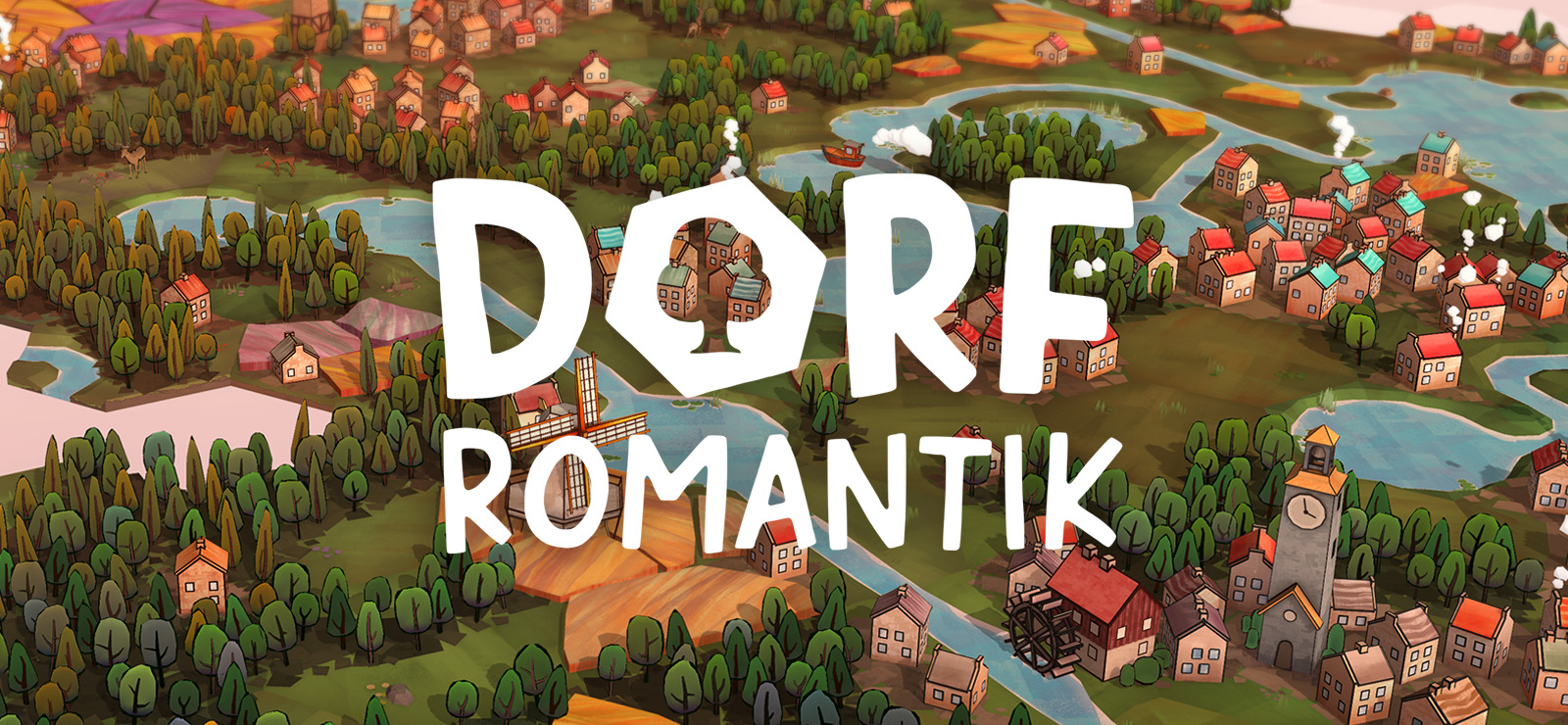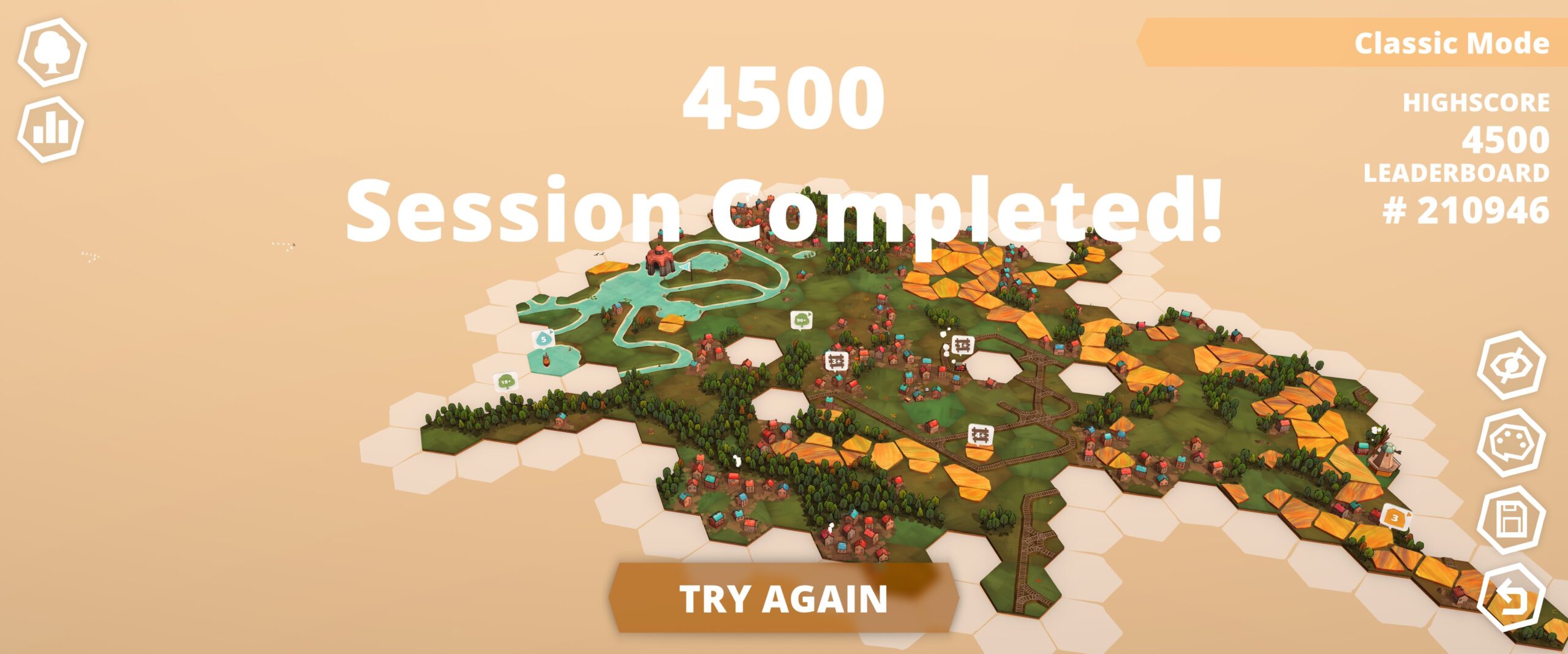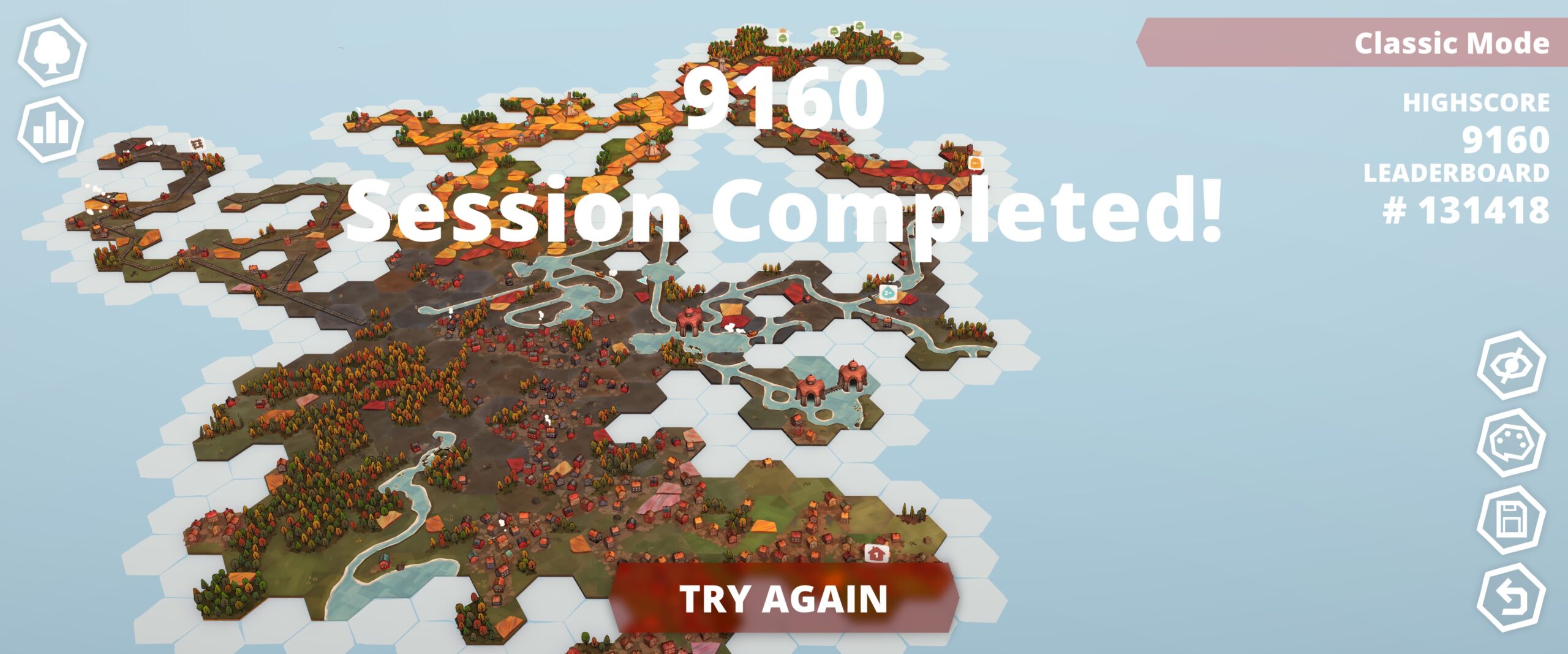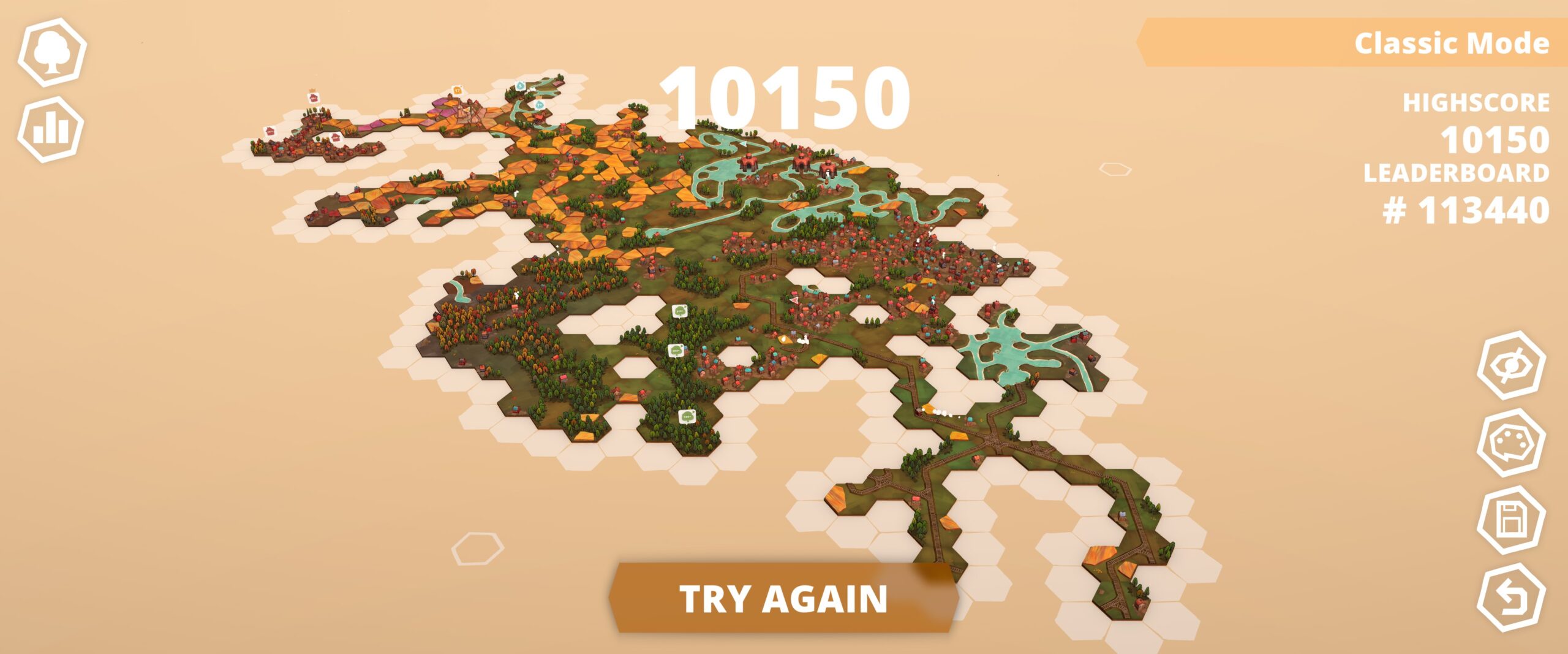I’ve had (and still do, for reasons that’ll become self evident) an itch to play a good city builder for sometime. There’s been a few decent candidates that have been released or gone Early Access recently, but most either strayed too far from the city builder formula I was after or were too feature incomplete for me to want to review. That, combined with my anxiety around playing games that demanded a lot of my time, had left that itch unscratched for a good long while. That’s why I think I relented when it came to Dorfromantik as whilst it does appear to be the kind of game people seem to lose a good portion of their life to, it’s also one that I could get a good bearing of in a couple hours. Suffice to say I think it’s brilliant for what it is, even if that meant I only spent a few hours with it.

Dorfromantik straddles a couple different genres, borrowing elements from well known tropes in an interesting combination that I haven’t really experienced together before. To be sure, it’s a kind of city builder, one where you’re building out a what’s effectively a quaint rural area dotted with streams, rivers, farmland and small towns. It’s also a strategy game, as the placement of each of the tiles is scored according to how many sides match that of its neighbours. Further to that there’s quests built in that have you matching long sections of tiles together or capping off areas in order to generate more tiles to place down. This is where the game’s dichotomy of play times comes from: you can either enjoy it for the simple challenge and leave it at that or, if you’re so inclined, see how far you can push your city building/biome shaping capabilities chasing the top spot on the leaderboard.
Aesthetically Dorfromantik is very pleasing, combining low-poly models with hand drawn textures to give the whole world this delightfully whimsical feeling. The music and foley work is also very much in the same vein, having that same “Sims-like” feel that these sorts of games all seem to evoke. The controls are a little bit unintuitive to begin with but you’ll become quickly familiar with the context sensitive parts which makes your job of placing tiles that much easier. Simplicity can be a very hard thing to do right and the developers of Dorfromantik have nailed it.

Now I’ve only played the classic mode (although I can see the appeal of the creative mode) and it definitely falls into the category of games that’s easy to learn but exceptionally hard to master. Starting out is easy enough as you can usually get pretty far just placing tiles that are similar enough to each other so that when a quest pops up, you can usually get there, but you won’t find yourself running a game longer than say 15 minutes or so before you’re out of tiles. That’s where the strategy aspect comes in and, honestly, I don’t think my approach is anywhere near optimal.
You can see that strategy in action in the screenshots below. Basically I try to separate out the biomes into different areas, usually linking most of them up as best I can whilst turfing blocks with too many different sides on them into a no-mans-land area. Then when I see one of those special blocks pop up I’ll make a beeline to it with whatever blocks I have in that biome to unlock it. This definitely led to longer session times, but it was clear I was just prolonging the inevitable and the strategy isn’t infinitely sustainable.

I think part of the issue with my strategy is that it becomes exponentially difficult to close off any one particular biome as they inevitably increase in size to the point where it’d require more tiles than I have to close them off. Now I’m not sure what the balance act here needs to be, as it seems the more tiles deep you get the higher the number of tiles needed to satisfy particular quest chains becomes. Now, this could be because of the strategy I was employing, I’m not sure, but it does feel like the game isn’t wanting you to build sprawling single tile chains like I was all the time.
The only real quibble I had was with the interface design, which was a little confusing with certain things. For instance there’s no restart or new game button on the new menu, it’s simply assumed that you have to play the game through to failure before you can hit try again. Indeed the game will even present your failed game back to you when you reopen it after closing, which depending on how you feel about those things could be the game thumbing its nose at you or motivation to do better next time around. There were also some other parts of the UI that don’t make a huge amount of sense unless you dig through them or consult some guides, but in the grand scheme of things they don’t get in the way of playing the game too much.

Dorfromantik was quite the unexpected joy to play. Whilst it’s certainly not the kind of game I’ll recommend broadly it definitely has great appeal to several different niches, something that a lot of games would not be able to make claim to. The audio-visual experience, simple mechanics but challenging mastery all work together well, allowing a wide range of players to make what they want of the experience. Whilst it might’ve only been a short stay for this gamer I can see the appeal of spending countless hours in it, either crafting your own tiny unique world or chasing the dragon of the high score chart.
Rating: 8.5/10
Dorfromantik is available on PC and Nintendo Switch right now for $19.95. Game was played on the PC with 2.9 hours of total playtime and 13% of the achievements unlocked.



